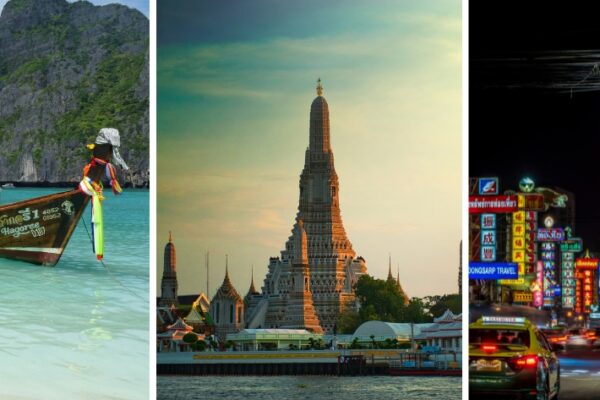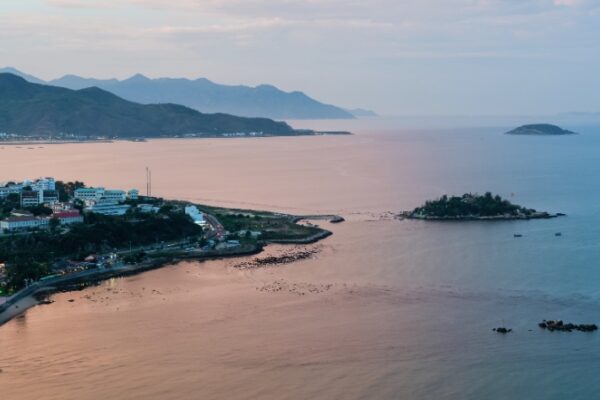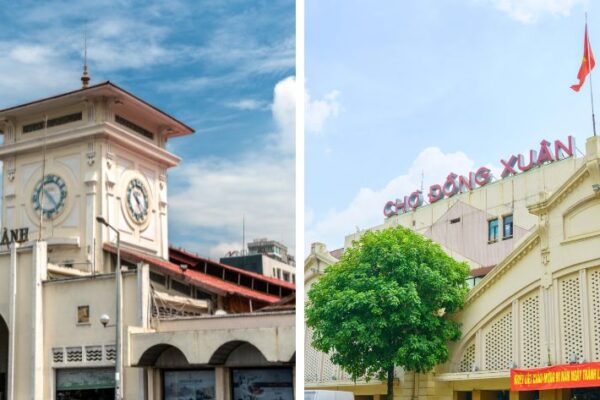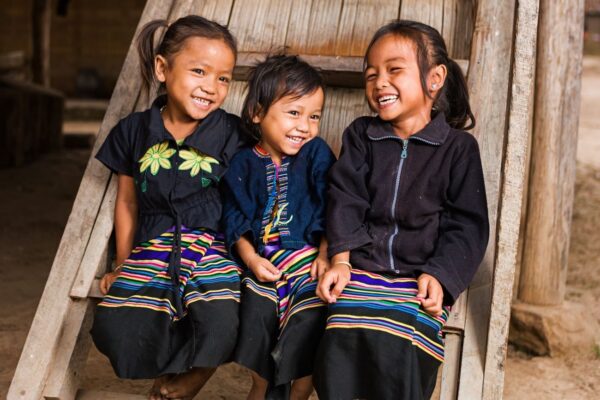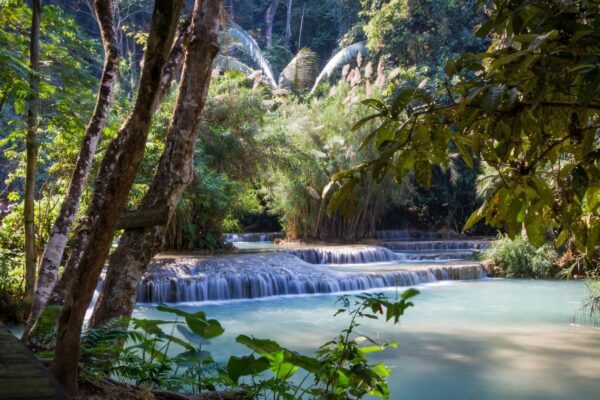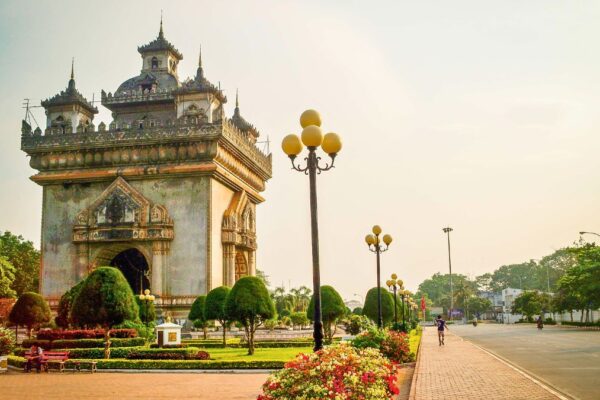Luang Prabang vs Vientiane vs Pakse: Which Cities in Laos Matches Your Travel Style?
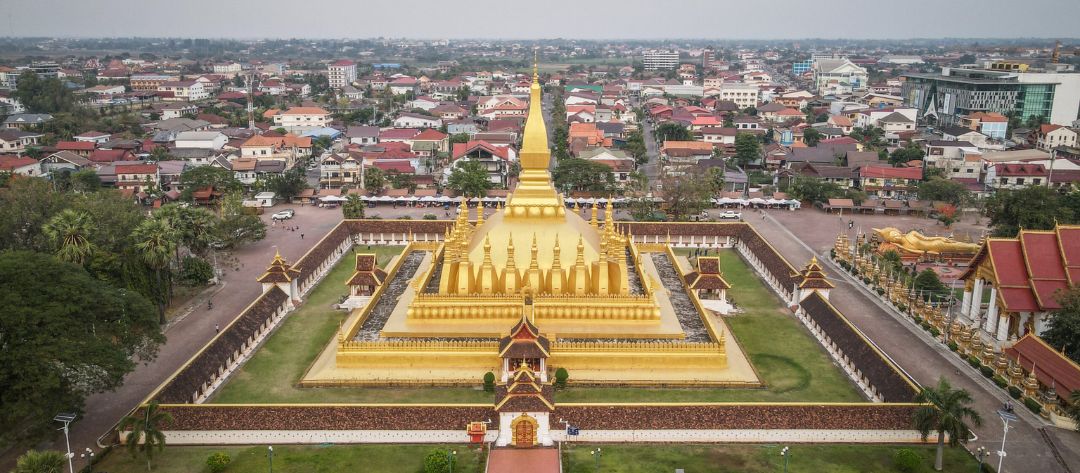
Luang Prabang, Vientiane and Pakse may all embody the calm spirit of cities in Laos, yet each reveals its own shade of peace. From timeless traditions to riverside ease, their differences shape distinct journeys. So, it’s worth exploring carefully to see which city matches yours best.
Quick Snapshot: How These Three Cities Compare
- Luang Prabang captures the essence of old-world Laos with its golden temples and quiet streets wrapped in a UNESCO title. Wat Xieng Thong glimmers in the heart of town, while Kuang Si Waterfall lies just a short drive away, offering a cool escape from the heat. Domestic and regional flights connect easily through Luang Prabang Airport, keeping the city’s charm within easy reach.
- Vientiane, by contrast, moves at a gentler capital pace. The Mekong riverfront hums with life as locals gather in cafés, and landmarks like Pha That Luang and Patuxai reflect both faith and French-era history. Wattay International Airport keeps the city well linked, yet its rhythm remains surprisingly calm for a capital.
- Pakse feels more like a launch pad to nature. The Bolaven Plateau’s coffee plantations, the thunder of waterfalls, and the 4,000 Islands nearby make it ideal for scenic road trips. Flights through Pakse Airport keep this southern city connected to adventures waiting beyond.
>> Read More: 7 Enchanting Laos Festivals and The Best Way to Experience Them Like a Local
Luang Prabang — The UNESCO Soul of Laos
Why Travelers Fall in Love with This City
Between the Mekong and Nam Khan rivers lies Luang Prabang—one of the cities in Laos that seems to move to the rhythm of temple bells and the soft steps of monks at dawn. Awarded UNESCO World Heritage status for its exceptional preservation, the town intertwines Buddhist sanctuaries, teak houses, and French-colonial façades in a harmony that feels both ancient and alive.
Every morning, the alms-giving ceremony, or Tak Bat, threads through quiet streets as locals offer sticky rice in hushed devotion. What a spiritual yet unassuming moment that defines the town’s quiet dignity!
Along these same streets, saffron robes contrast with the pastel shutters of colonial villas, and the scent of fresh baguettes mingles with incense drifting from temple courtyards. So complete is its preservation that one might sense the past and present breathing side by side.
>> See Tour: Luang Prabang Heritage Exposure
Top Things to Do
- Witness the alms-giving (Tak Bat): At sunrise, saffron-robed monks silently walk through town, receiving offerings of sticky rice and incense—a moving ritual that underscores Luang Prabang’s spiritual roots.
- Visit Wat Xieng Thong: One of the most elegant temples in Laos, with its low sweeping roofs and intricate mosaic “tree of life” detail, it exemplifies the artistry of Laotian royalty and religion.
- Explore the Royal Palace Museum: Housed in the former king’s residence, this museum provides insight into the country’s monarchy, religious wall-art and colonial-era domestic life.
- Climb Phou Si Hill for dawn or dusk views: Rising in the town centre, the hill offers panoramic views across rivers, rooftops and mountains—a perfect way to capture the town’s layout and light.
- Take a short trip to Kuang Si Falls: A cascade of turquoise pools and forest trails located just outside town; early arrival helps avoid crowds and secures better photo-light.
- Go to Pak Ou Caves: A boat ride upstream leads to caves filled with countless Buddha statutes—a unique blend of nature, pilgrimage and river travel.
- Browse the Night Market: Every evening along Sisavangvong Road local artisans display textiles, wood-carvings and silk—ideal for souvenirs or just soaking in evening rhythms.
Practical Tips
- Visit between October and February to benefit from cooler, drier weather.
- Arrive early at Kuang Si to beat the tour buses.
- When entering temples, wear modest clothing (shoulders and knees covered).
- Booking your time or transport ahead helps avoid last-minute rush in peak season.
Who Should Pick Luang Prabang?
Luang Prabang travel suits those drawn to culture, calm, and quiet discovery. For travelers who prefer reflection to rush, the town’s rhythm feels almost meditative—monks collecting alms at dawn, the scent of incense drifting through ancient wats, and evenings spent by the river under soft lantern light.
Couples will find romance in its graceful simplicity, while photographers are rewarded with scenes that shift beautifully with the light. Slow travelers and culture seekers alike can fill their days visiting temples, browsing artisan markets, or taking short trips to waterfalls and local villages.
Whether staying two days or ten, this is not among cities in Laos to rush through. The more time spent lingering, the more its quiet beauty reveals itself. Luang Prabang rewards patience, curiosity, and a willingness to slow down enough to feel the soul of Laos.
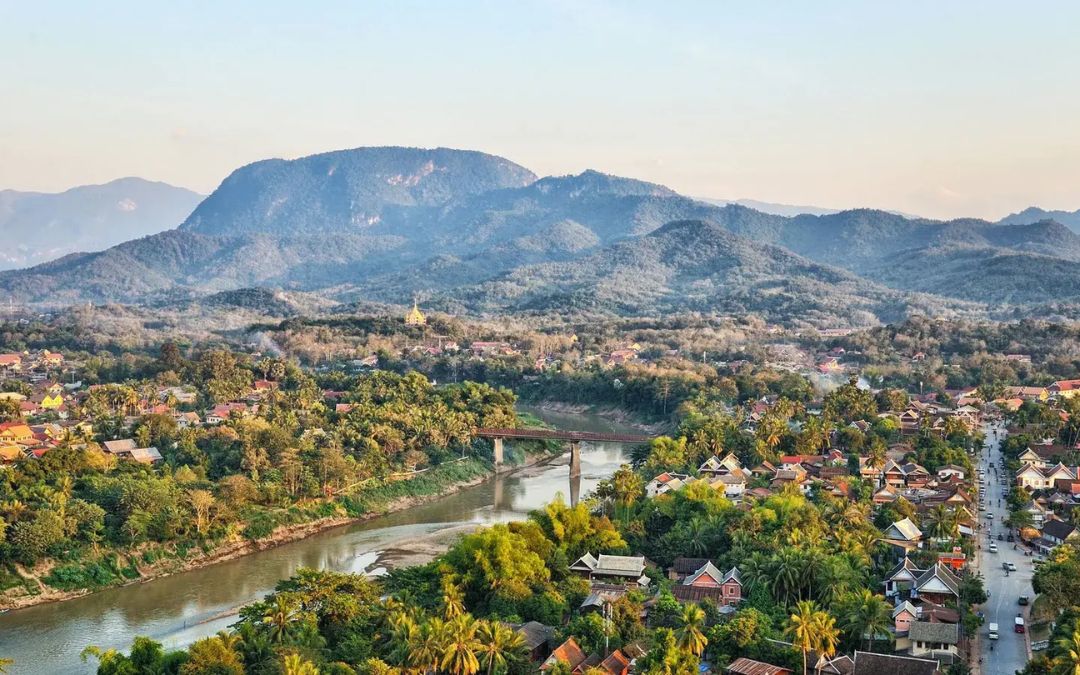
Mountains embrace this Luang Prabang, where golden temples pierce through the tropical canopy.
Vientiane — The Relaxed Capital
Vientiane’s Unique Appeal
Unlike most capitals in Southeast Asia, Vientiane carries the spirit of a riverside town more than that of a metropolis. Life moves at an easy rhythm along the Mekong River, where evenings unfold with soft breezes and pastel sunsets over distant Thai shores. Such unhurried beauty shapes the city’s character that even its political and religious heart feels distinctly gentle.
Tree-lined boulevards hint at the city’s colonial past, while golden spires and Buddhist stupas tell of deeper devotion. Pha That Luang, the country’s sacred national symbol, gleams against the skyline—its layered tiers representing both unity and faith.
Not far away, Patuxai rises like a Lao interpretation of the Arc de Triomphe, complete with mythological carvings and sweeping views from the top. Among cities in Laos, its layout remains compact, so travelers can wander from temple to café to riverside promenade without hurry.
With Wattay International Airport nearby and a growing network of guesthouses and eateries, Vientiane works seamlessly as a short-stay base. It’s perfect for those passing through, yet equally rewarding for anyone wishing to slow down and experience Laos in its quietest form.
Top Things to Do
- Explore Pha That Luang: This gilded stupa is approximately 45m high and dates back to 1566; it’s regarded as Laos’ most important national monument.
- Climb Patuxai: Built in the 1960s to honour Laotian soldiers, Patuxai mirrors the layout of the Arc de Triomphe, yet is adorned with Lao motifs and offers panoramic city views from its top.
- Visit Buddha Park (Xieng Khuan): Located about 25km from the city, this outdoor sculpture park features over 200 Hindu and Buddhist figures in concrete.
- Stroll the Mekong riverside at sunset: As day turns to dusk, riverside cafés and beer gardens along the Mekong provide relaxed vantage points over Thai-Laos border views.
- Browse local markets and cafés: The morning market “Talat Sao” and Mekong-front night stalls offer authentic insight into daily life, from textiles to simply enjoying a coffee while watching the river.
Practical Tips
- Visit during the dry season (November to March) when weather is at its most settled.
- Pair Vientiane with a day trip (for instance to Buddha Park or nearby villages) to enrich your time.
- Plan for modest dress when entering religious sites.
Who Should Pick Vientiane?
Vientiane travel fits travelers who appreciate calm over chaos and subtle charm over spectacle. Those on short stays—whether between flights, on business, or completing a visa run—will find this capital perfectly manageable among cities in Laos, with major sights and amenities all within a short drive. It’s ideal for anyone who prefers their culture served with comfort: sipping local Lao coffee in colonial-era cafés, watching the sun dip behind the Mekong, or wandering temple courtyards in the afternoon hush.
For solo travelers, the city offers a sense of ease and safety that encourages slow exploration; for couples, it’s a mellow stop to unwind before venturing deeper into Laos. Remote workers or digital nomads often use it as a practical base among cities in Laos, given the reliable Wi-Fi and peaceful café scene.
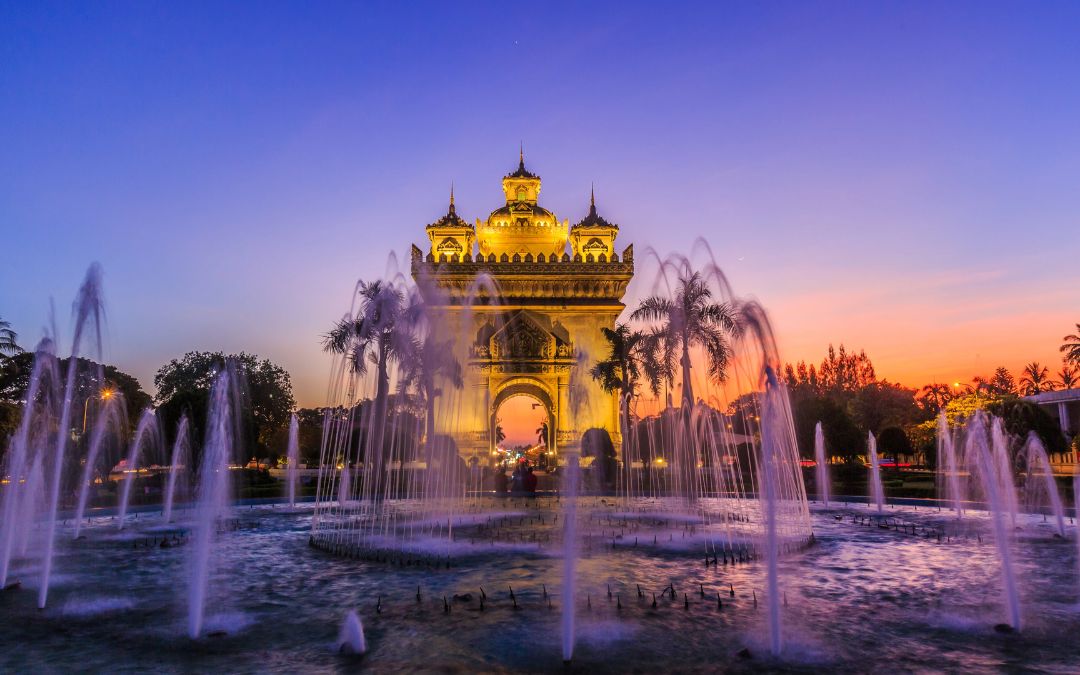
Patuxai monument stands illuminated in golden light, framed by dancing fountains beneath Vientiane’s twilight sky.
Pakse — Gateway to Coffee, Waterfalls & Islands
What Makes Pakse Special
Pakse sits at the southern edge of Laos and serves as both a practical hub and a launchpad for remarkable landscapes. It’s the ideal starting point for exploring the Bolaven Plateau, which is renowned for fertile slopes where French-introduced coffee flourishes and waterfalls plunge through jungle canyons.
Nearby lies the pre-Angkorian temple complex of Wat Phu, a UNESCO-recognised site dating to the Khmer empire. Beyond the plateau, the famed 4,000 Islands (Si Phan Don) spread in the Mekong River, offering laid-back island time, boat rides and riverine village life.
Because of its convenient airport and connections, Pakse allows visitors to combine highlands, heritage and islands in one region. Comparing cities in Laos, nature lovers, culture seekers and adventurers alike find something compelling here.
Top Things to Do
- Explore the waterfalls of the Bolaven Plateau: Sites such as Tad Fane, with twin streams plunging over 100 meters and Tad Yuang offer dramatic scenery, jungle trails and refreshing swims.
- Visit coffee farms and plantations: Take a tour around Paksong and the Bolaven Plateau’s villages; learn how robusta and arabica thrive in volcanic soils and humid air, and taste freshly-roasted beans.
- Step back in time at Wat Phu: Drive to the Champasak region to see this historic Hindu-Buddhist complex of 5th–11th century origin, perched above the Mekong with impressive ruins and riverside views.
- Take a boat trip among the 4,000 Islands: From Pakse, arrange onward transport to the Mekong’s southern archipelago; ride to Don Det or Don Khǒn and soak in village life, riverside hammocks and slow-moving boats.
Practical Tips
- The best period to visit spans the dry season (November to March) when roads and trails across the plateau are most accessible.
- Many travel services in Pakse can organize day tours or multi-day loops, so rent a motorbike or join a guide if venturing off main roads.
Who Should Pick Pakse?
Pakse travel suits travelers drawn to the rhythm of nature and the satisfaction of discovery. Coffee lovers can follow the aroma of freshly roasted beans across the Bolaven Plateau, learning how altitude and soil craft each distinct flavor.
Those who crave movement will find endless trails leading to misty waterfalls, ethnic villages, and quiet corners where daily life unfolds at an unhurried pace.
For the curious, ancient Wat Phu offers a glimpse into Laos’s spiritual heritage, while the 4,000 Islands invite slow days of cycling, kayaking, and river sunsets.
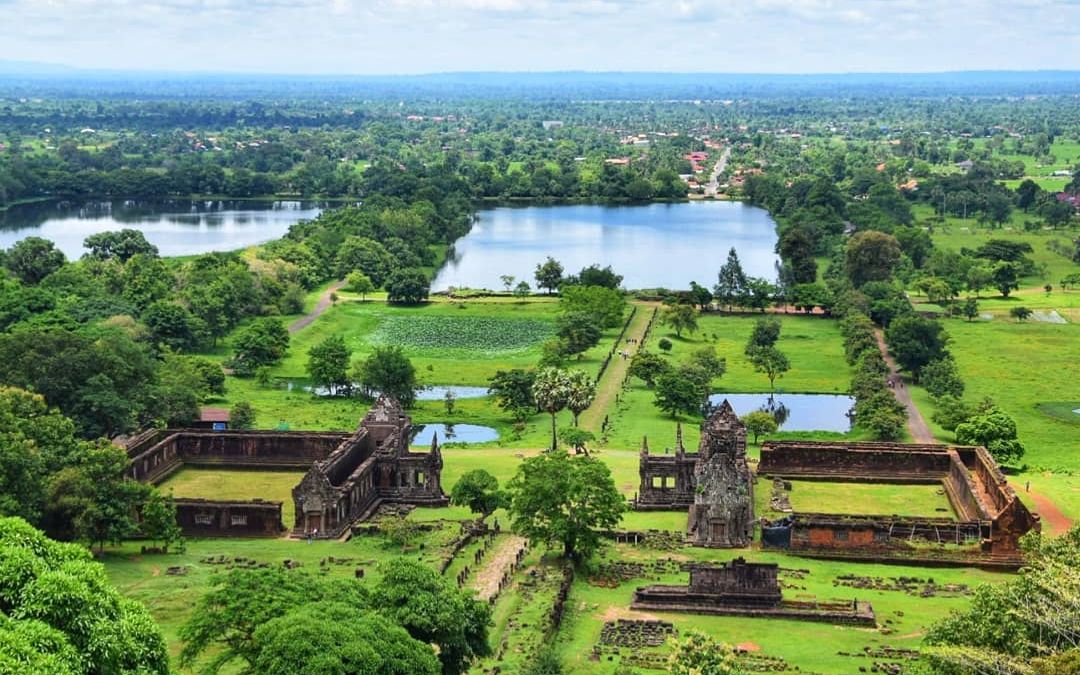
Ancient Khmer ruins rest amid emerald rice fields and tranquil reservoirs in Pakse’s lush southern landscape.
Compare Three Cities in Laos: Pace, Price, and Practicalities
Pace & Atmosphere
Cities in Laos | Pace & Atmosphere |
Luang Prabang | A gently unfolding rhythm defines this town—silent monks in the early morning, colonial façades basking in dusk light, and cafés that invite lingering rather than rushing. Its ritualised life and preserved heritage ensure that every corner feels calm and reflective. |
Vientiane | Though it is the national capital, Vientiane retains a relaxed riverside mood. Tree-lined boulevards, café-lined promenades and government buildings give it calm dignity. It’s compact enough to explore in a short stay and yet offers enough substance to feel complete. |
Pakse | As the southern regional hub, Pakse moves at a more varied tempo. The town itself feels modest, but it serves as a gateway to active day trips, such as coffee-plateau tours, waterfalls and island mini-escapes. Hence, the pace shifts between a relaxed base camp and an adventure springboard. |
Cost & Accommodation
Cities in Laos | Accommodation Typical Range | Notes & Practicalities |
Luang Prabang | From budget dorms at around 6–10 USD/night up to boutique hotels 40–80+ USD in peak season. | Boutique guesthouses and riverside villas dominate. Credit cards are accepted in many hotels, but still advisable to carry small cash. |
Vientiane | Wider spread: Budget guesthouses from 10–20 USD, mid-range private rooms 30–50 USD, luxury upwards. | More affordable mid-range options compared to Luang Prabang. ATMs and card facilities are reliable in central areas. |
Pakse | Budget rooms start at 5–9 USD; mid-range 15–30 USD; luxury stays rare but available. | In rural surroundings (e.g., around the Bolaven Plateau or 4,000 Islands), cash is often required and ATMs may be limited. Always check before heading into remote areas. |
Access & Transport
Cities in Laos | Airport & Primary Air Access | Overland & River Options |
Luang Prabang | Served by Luang Prabang International Airport. Located about 4km from town, handles domestic and regional flights (Bangkok, Chiang Mai, Siem Reap) as well as daily flights to/from the capital. | Overland by road is possible but takes many hours; some river “slow-boat” routes on the Mekong exist (e.g., Huay Xai ↔ Luang Prabang) yet schedules vary with season and water levels. |
Vientiane | Served by Wattay International Airport. About 3km from the city centre, the country’s main international gateway and domestic hub. | Road travel to other cities is possible (Highway 13 is the main spine) but journeys can be long; river-boat options are less central here though riverside transport exists. Overland to other provinces should allow ample time. |
Pakse | Served by Pakse International Airport. A key hub in southern Laos connecting the Bolaven Plateau, the 4,000 Islands region, and other remote areas. | Overland travel can be lengthy—e.g., by road to Vientiane or Luang Prabang takes many hours. Water-based transport (river boats) may be available in the 4,000 Islands area but is subject to seasonal changes in river levels. |
Best Time to Visit Each City
Cities in Laos | Best Season | Weather Pattern |
Luang Prabang | November to February | This period offers cool, dry weather with daytime highs around 20-25 °C and clear skies—ideal for exploring temples, riversides, and waterfalls. The months of March and April see rising heat and the unpredictable burning season, which can affect air quality. |
Vientiane | November to February (or extending into March) | During these months, the capital experiences its most comfortable climate—mild temperatures, low humidity, and minimal rain—perfect for city strolls and riverside cafés. From March onward, the heat intensifies, and the wet season begins by May. |
Pakse | November to March | In southern Laos, the dry season delivers clearer skies, moderate temperatures (around 22-30 °C), and safer road conditions for exploring the highlands and islands. October and April serve as shoulder months, while May to October bring lush scenery, they also carry heavy rainfall and potential access issues. |
>> Read More: Best Time to Visit Laos
Final Words
As you read through the charms of these three cities in Laos and finish the quick quiz, you’ve likely found the one that speaks to your heart. Whether it’s the quiet grace of Luang Prabang, the gentle rhythm of Vientiane, or the adventurous pull of Pakse, each destination promises moments that stay long after the journey ends.
Ready to turn inspiration into an itinerary? Let Asia Pioneer Travel help you craft the trip that fits your pace and passion perfectly!
